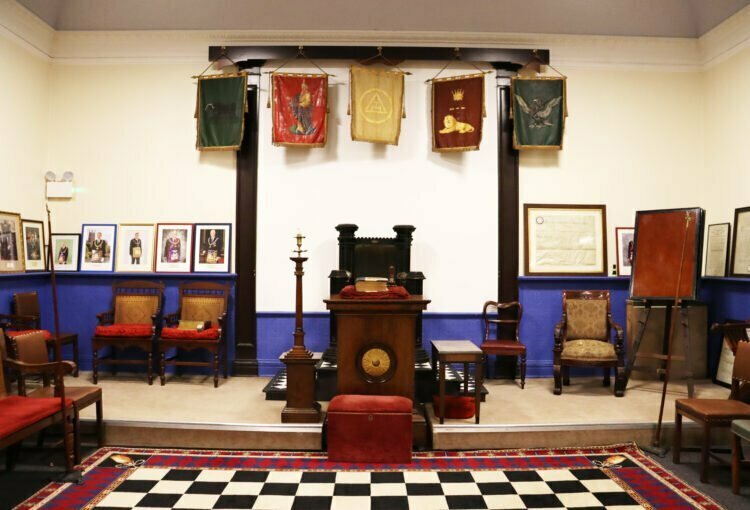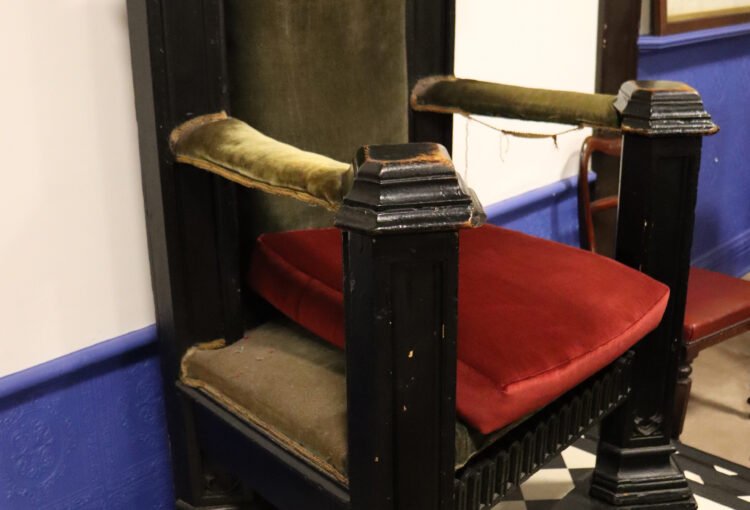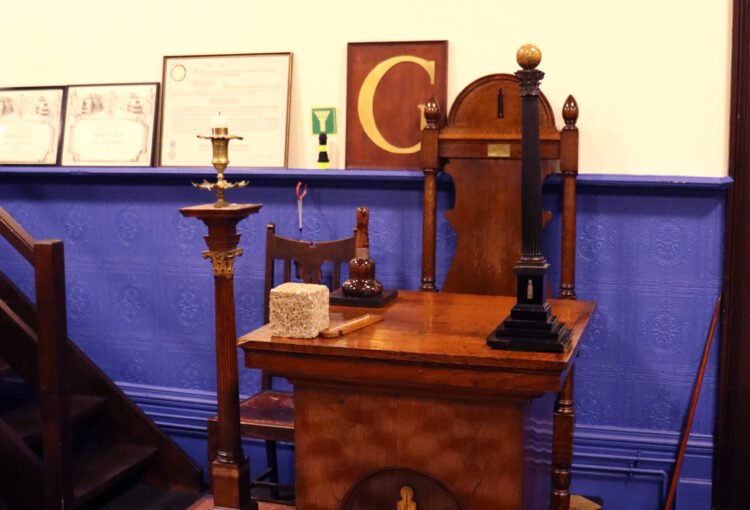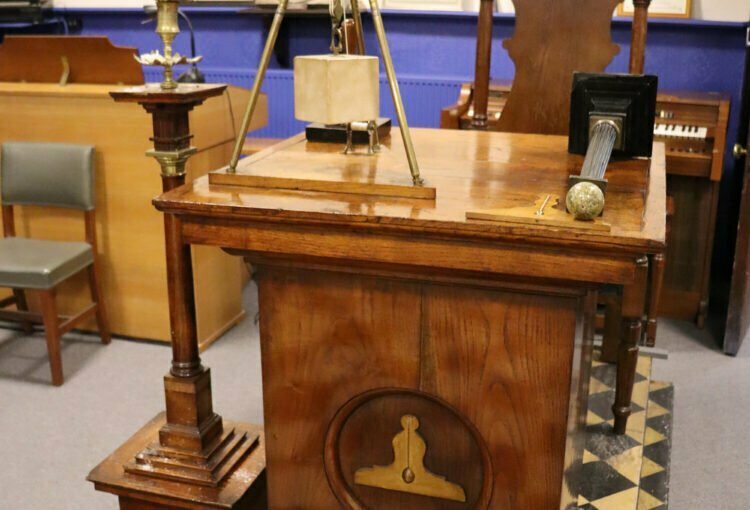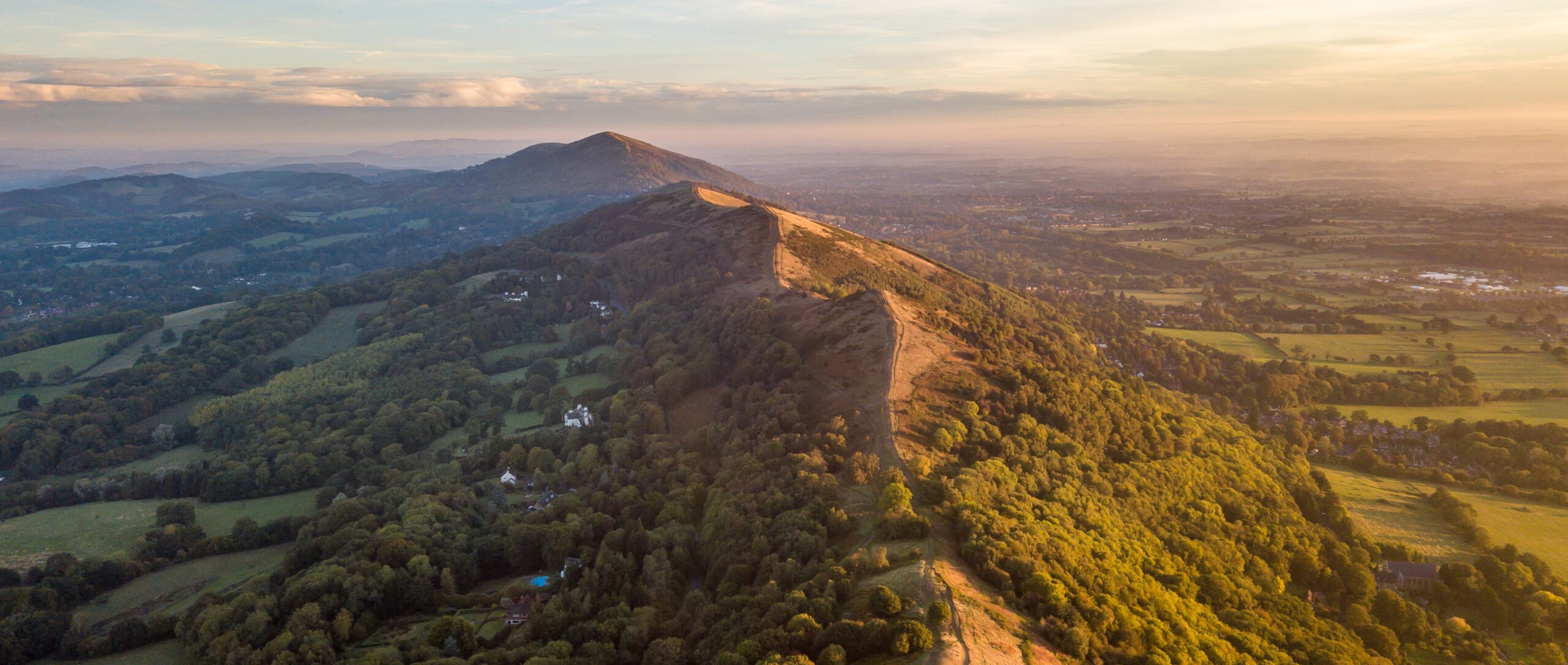
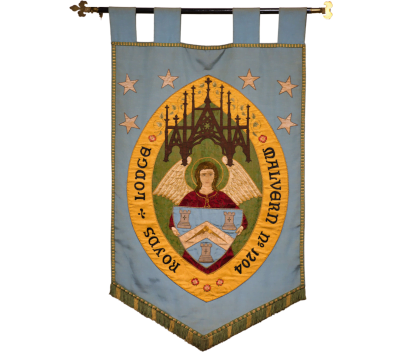
The following extract was taken from an excellent booklet entitled ‘Malvern Freemasonry and the Masonic Hall’, first published in August 2005 by W.Bro. R. F. Hall-Jones, a member of the Malvern Hills Lodge No. 6896.
The article explains the development of Freemasonry in Malvern and gives an account of the origins and uses of the buildings now known as the Masonic Hall.
The Masonic Hall, situated on Belle Vue Terrace in Great Malvern, has been the home of Malvern Freemasons since 1912.
Brief Background History of Malvern
The origins of Great Malvern lie in the foundation of a Priory of Benedictine Monks in 1085. After the Priory was dissolved in 1539, the village that had grown next to it hardly changed until Dr. Wall of Worcester made public the extreme purity and healing effects of Malvern Water in the middle of the eighteenth century. Malvern became a popular ‘watering place’ or spa and many of the elegant late Georgian and Regency properties were built in the late eighteenth and early nineteenth centuries. Malvern also benefited from being on the high road between Worcester and Ledbury, so that accommodating travellers remained a priority in addition to accommodating the growing number of visitors.
The Crown Inn on Belle Vue Terrace was in existence from at least the mid-eighteenth century. Lloyds Bank now stands in its place.
The Belle Vue Hotel was built next to the Crown Inn at about 1816 and most of that hotel remains today, although its ground floor rooms have been converted into shops. An engraved advertisement from Lewis’s Directory of Worcestershire of 1820 shows the elegant three storey building with four entrances. The main entrance to the hotel, which is now the entrance to the Masonic Hall, has a columned porch and at the north end is a wide carriage entrance with doors. The advertisement proclaimed, ‘Families boarded in private apartments, good post horses with closed and open carriages, excellent stables for horses and livery with commodious coach houses’. It was part of this building that was to become the Masonic Hall.
In 1812 there was a dramatic change in Malvern’s prosperity after two doctors, James Gully and James Wilson, chose Malvern in which to establish the new ‘Cold Water Cure’. They took a lease of the Crown Hotel and within a few years had expanded into their own newly built establishments and were attracting patients, more hydropathic doctors and other visitors in great numbers. New boarding houses, water cure establishments and residences were built and so quickly had Malvern developed that by 1851 it had an Act of Parliament to establish a ‘Local Board’, the forerunner of the Malvern Urban District Council. A local solicitor, Thomas Barneby, was the first clerk of this Board and his first office was at the Belle Vue Hotel. By 1860 the population was over 3,500 and the railway had arrived, linking Malvern to Worcester and, a year later, to Hereford.
The Royds Lodge is Founded
It is recorded that in November 1801 James Stokes, gentleman, of Malvern, was initiated in the Worcester Lodge which had been founded in 1790 and then met at the Rein Deer Inn in Mealcheapen Street, Worcester. He may have been the first Malvern Freemason.
In the middle part of the nineteenth century, before the founding of The Royds Lodge, there were many residents of the expanding and thriving town of Malvern who were members of Worcester Lodges. Edward Wallace Elmslie, who settled in Malvern in 1855, is of special interest. He was initiated into the Worcester Lodge No. 280 in 1857 and was the notable architect of Great Malvern Station, the Imperial Hotel (now Malvern St James), the Priory Park Mansion (now the Council House) and many other buildings in the town.
In 1846 another Lodge was founded in Worcester, Lodge Semper Fidelis No. 529. A group of members of this Lodge met in 1867 and decided to found a Lodge in Malvern. It was named The Royds Lodge after the Provincial Grand Master for Worcestershire at the time, Albert Hudson Royds. It was consecrated at Townshend House, the establishment of one of the water cure doctors, Ralph Barnes Grindrod, in December 1867.
That building later became a monastery and is now the Music School of Malvern College at the corner of Priory and College Roads. The consecration meeting was followed by a service in Great Malvern Priory and a banquet at the Belle Vue Hotel.
Meetings of The Royds Lodge were held at the Belle Vue Hotel for several years, but changed in 1876 to the Imperial Hotel. In 1879, the Lodge took a lease and moved to what had been the bath house of Hardwicke House, formerly the water cure establishment of Dr. Marsden, for by this time the founders of the Water Cure had died or retired and the Water Cure itself was in serious decline. Hardwicke House, in Abbey Road, was replaced by an ugly block of flats in the 1950s, but the bath house, still called ‘Royds Lodge’, though altered, still exists as a private residence in College Road.
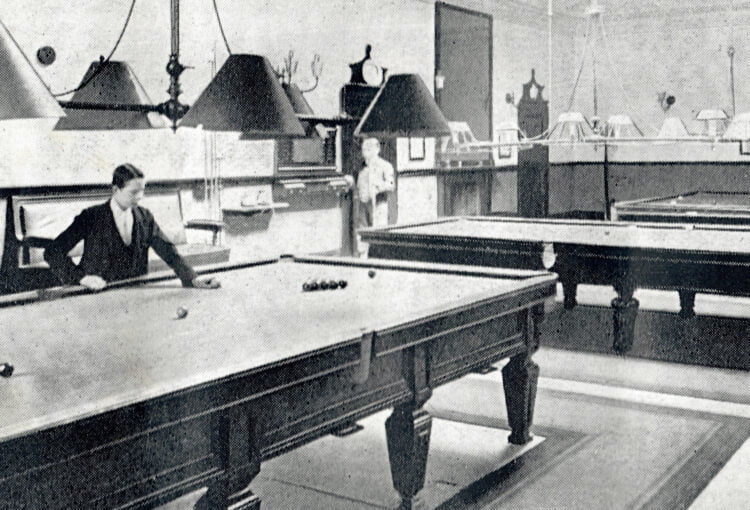
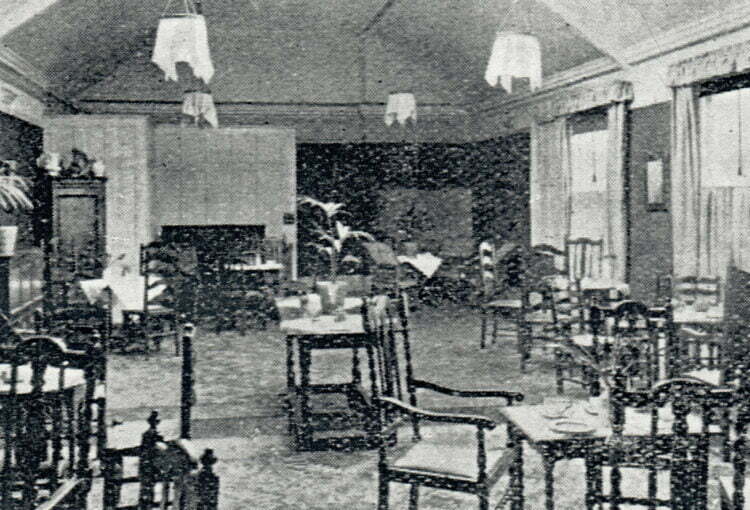
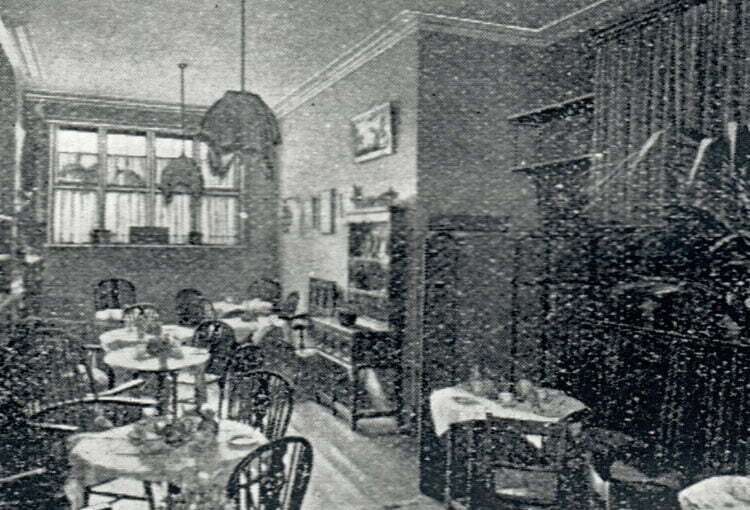
The Belle Vue Hotel and the Masonic Hall
The Masonic Rooms
The Masonic Hall, now usually called the ‘Lodge Room’, was formerly the Billiard Room, which had been advertised in the early 1860s. In 1906 it was reported to have been re-decorated and re-opened. The following is a contemporary description: ‘The Billiard Room is of unusually fine, lofty and spacious proportions, easily finding space for the three tables it now contains. The addition of three handsome settees upholstered in red leather, club fenders to the fireplaces and comfortable carpets surrounding each table have nothing but good to say, while the effect of its redecoration has been to lighten the room and rendered its noble proportions more handsome in effect’. The first Lodge meeting was held there on the 9th January, 1912.
A picture of the Billiard Room from 1906 shows how little it has changed over almost a century. The ornate doors are a particularly significant feature; the two on the north wall opening into cupboards. The ‘three handsome settees’ mentioned in 1906 still appear to be in use in the Lodge Room today. However, the fireplaces have been removed, the lighting changed and the skylight and large west-facing window have been boarded over.
The dining room is thought to have been the refreshment room allocated to commercial travellers to entertain their local customers. It seems that the dining room also served as the Oak Tea Lounge until at least 1928 and it was obviously a refreshment room open to the public. An advertisement shows that it was in the same ownership as the Oak Tree in Graham Road. It also shows that, apart from the furniture, it has not changed over the years except for the new bar in the alcove.
The dining room has been used for non-Masonic events. For instance, in 1933 the Old Lytteltonian Association held its first reunion dinner there. The Association was for old boys of the Lyttelton Grammar School which closed in 1946 and was in the old building now known as the Lyttelton Well in Church Street.
The lease of the building was due to expire in 2001, but to secure the future of the Masonic Hall a new 150-year lease was obtained in 1989 which resolved the
uncertainty and the financial and legal difficulties that would arise when the old lease came to an end.
Other Lodges and Orders Meeting at Malvern
The Royds Lodge met for a few years at the Imperial Hotel, which became the Malvern Girls’ College in 1919. In the same year, St Werstan’s Lodge was founded as a daughter Lodge to meet in the summer months, particularly for the benefit of fathers of girls at the Girls’ College visiting Malvern. This Lodge moved to Evesham in 1976 and still meets there between April and September.
In 1934, The Royds Royal Arch Chapter No. 1204 was founded and consecrated, mainly by members of The Royds Lodge. Today, The Royds Royal Arch Chapter is one of the largest Chapters in Worcestershire.
After the second world war, there was substantial interest in Freemasonry nationally and such was the demand for membership that many Lodges became oversubscribed and new ones were founded to accommodate the new members. In Malvern, this resulted in the consecration of the Malvern Hills Lodge No. 6896 in 1949, another daughter Lodge of The Royds Lodge.
In 1969, brethren from another Masonic order, Mark Masonry, founded the Malvern Priory Lodge of Mark Master Masons No. 1351.
More recently, the Morgan Lodge No. 9816, a daughter Lodge of the Malvern Hills Lodge, was consecrated on Saturday 18th March, 2006. This Lodge is intended for owners and supporters of the famous Morgan motor cars, which are still made in Malven.
Another Lodge meets once a year in Malvern, but not at the Masonic Hall on Belle Vue Terrace. The Old Malvernian Lodge is a London Lodge and a member of the Public School Lodges’ Council. It is essentially for old boys of Malvern College and holds three regular meetings in London, and just one of its meetings every year at Malvern College on the eve of he summer Old Malvernian weekend.

